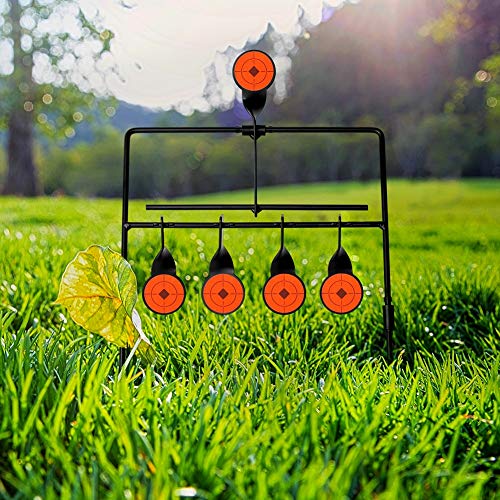Safety First: Top Guidelines for Using Pellet Guns
Pneumatic weapons are a favored choice for both recreational shooters and those looking for a dependable option for vermin management and small game hunting. Whether you are a veteran enthusiast or a novice to the world of shooting sports, understanding the details of pellet guns can substantially enhance your experience. With multiple types, attributes, and specifications available, choosing the appropriate pellet gun can seem daunting. However, prioritizing security and making well-informed decisions will ensure you find the ideal match for your needs.
In this manual, we will explore effective methods for using pellet guns safely and effectively. From picking the best power source to understanding the necessity of accuracy, we will cover all the essentials. Additionally, we will provide insights on safety features, maintenance tips, and accessories that can elevate your shooting experience. If you're aiming for precision shooting or starting a hunting adventure, this detailed guide will help you navigate the world of pellet guns while putting safety first.
Selecting the Appropriate Pellet Gun
As picking a pellet gun, it's crucial to consider your individual needs and desired use. Are read here use it for target shooting, hunting small game, or controlling pests? Your decision will considerably influence the variety of pellet gun that suits you most appropriately. For aiming at targets, a gun with excellent accuracy and a reliable mechanism is key, whereas small game hunting requires a combination of power and precision. Understanding your chief goal will assist narrow down your options effectively.
Another, key consideration to consider is the powering method of the pellet gun. Pellet guns typically come in 3 types: spring-powered, CO2, and PCP (pre-charged pneumatic). Each has its pros and disadvantages. Spring-driven guns are often reliable and require little additional equipment, but they may have a period of adjustment. click over here offer simplicity and consistent power but need cartridge replacements. PCP models offer high performance and are popular for accuracy, but they come with the need for a filling system and can be more expensive. Evaluating your liking for ease of use in contrast to performance will guide you toward the best choice.
Finally, reflect on the caliber and FPS (feet per second) that will best meet your shooting goals. Pellet guns come in multiple calibers, typically ranging from .177 to .22, with .177 being ideal for competitive shooting due to its less arched trajectory, while .22 is frequently chosen for hunting due to its greater stopping power. The FPS can affect your projectile's accuracy and range, with elevated FPS ratings generally providing superior performance. Familiarizing yourself with these details will assist you pick a pellet gun that fits your shooting aspirations.
Key Features to Consider
When selecting a pellet gun, it is essential to examine the type of propulsion, as it directly affects effectiveness and user-friendliness. Choices consist of spring, CO2, and PCP (pre-compressed air), each with specific strengths. Spring-powered guns are typically more reliable and require lower maintenance, making them perfect for novices. CO2 models offer reliable energy with easy cartridge changes, while PCP guns provide the best accuracy and power but require more investment and special tools for refilling.
Another important factor is the size of the pellet gun. Common calibers like .177 and .22 offer varied shooting styles, catering to specific purposes such as practice sessions or hunting. A .177 caliber is preferred for target shooting due to its straight trajectory and higher velocity, while .22 caliber pellets are better suited for hunting, providing more force. Selecting the right caliber guarantees that the gun aligns with your intended use.

In conclusion, think about the manufacturing quality and durability of the pellet gun. A trustworthy gun should be made from strong materials that can withstand frequent handling. Look for features such as a composite stock for protection against elements or a traditional stock for classic looks. Additionally, ensure there are safety features like built-in safeties and reliable locks, ensuring a safer shooting experience. By reviewing these critical elements, you can select a pellet gun that meets your personal requirements while adhering to safety regulations.
Pellet Gun Safety and Upkeep
Guaranteeing your safety when using airguns is paramount. Always regard your airgun as if it is loaded, keeping it pointed in a safe direction at all times. When not in use, place your gun in a locked place, out of reach of children, and utilize a reliable locking mechanism. Wearing safety glasses is also wise to protect your eyes from stray pellets or debris, especially when firing outside or during target practice.
Consistent maintenance of your airgun is important for best performance and longevity. After every use, clean the barrel and inspect for any indications of damage or damage. Apply lubricant to the necessary mechanisms according to the instructions to ensure optimal functionality. Proper maintenance prevents issues and promotes steady accuracy, making your shooting experience safe and enjoyable.
Before using your airgun, it's crucial to familiarize yourself with the instructions and be aware of its specific safety aspects. Elements such as automatic safeties, anti-bear trap mechanisms, and effective trigger locks enhance safety during handling. Make it a practice to inspect these safety features before each time you use it, ensuring that your pellet gun performs securely.